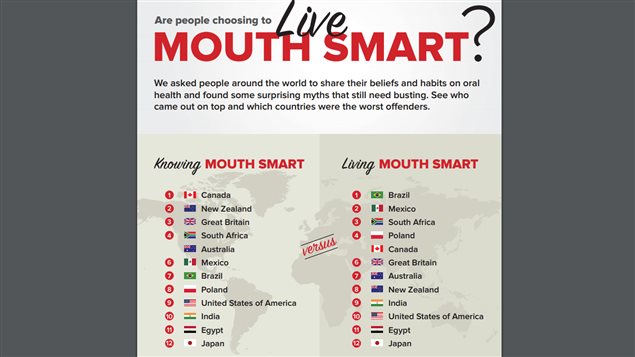Today, March 20 was World Oral Health Day. About 44 percent of the world’s population has tooth decay, and gum disease is present in 15-20 percent of adults between ages 35-44.
Many people are aware of oral health care, but like many health issues, there are a lot of misconceptions about what is healthy practice and what’s not.
An international survey of almost 13-thousand adults in 12 countries. Commissioned by FDI World Dental Federation, the survey found a large gap between what people think are healthy practices and what they actually do.

“These survey results highlight an alarming discrepancy between knowledge and actual good oral health practices,” said Dr Patrick Hescot, FDI President. “We want everyone to take control of their oral health this World Oral Health Day and understand that by adopting good oral hygiene habits, avoiding risk factors and having a regular dental check-up, they can help protect their mouths. A healthy mouth allows us to speak, smile, smell, taste, touch, chew, swallow and convey a range of emotions with confidence and without pain, discomfort and disease. Good oral health matters and translates to a better quality of life.”
The countries involved include the UK, the US, Australia, New Zealand, Canada, Japan, Brazil, Mexico, Poland, South Africa, Egypt, and India
Many people thought it was best to brush immediately after every meal. FDI however recommends waiting about 30 minutes after a meal to avoid weakening the teeth.
Many also though rinsing the mouth with water immediately after brushing was best practice. FDI recommends not doing that right away in order to maximize exposure to fluoride which helps protect teeth.
Meanwhile 77 percent said that visiting a dentist at least once a year is good practice, but only 37 percent do it.
Additional information- sources







For reasons beyond our control, and for an undetermined period of time, our comment section is now closed. However, our social networks remain open to your contributions.